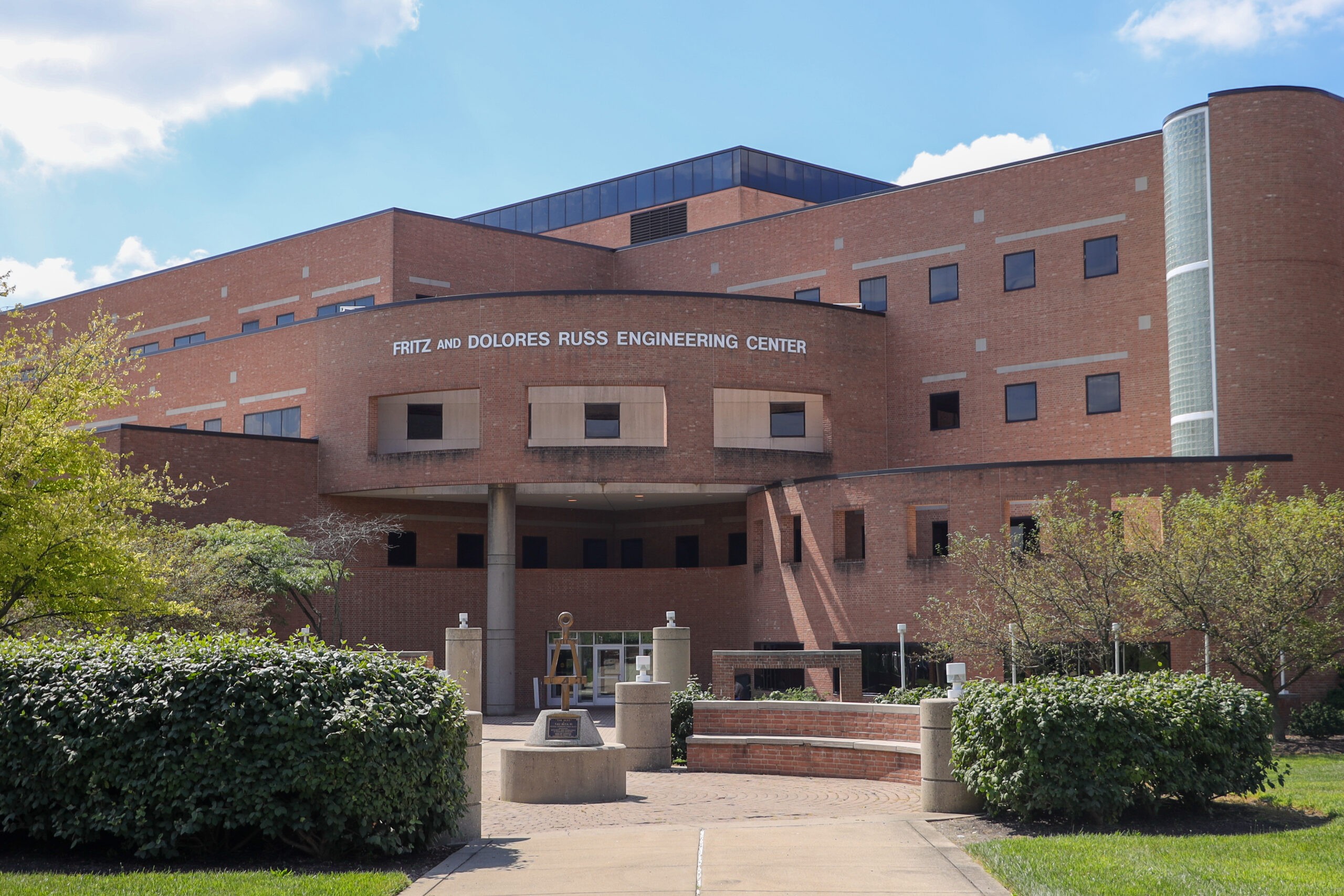
Russ Engineering | Photo by Monica Brutto | The Wright State Guardian
Technology is constantly advancing and the introduction of Chat GPT raises questions about the benefits and challenges artificial intelligence brings to higher education.
What is Chat GPT?
Chat GPT, introduced in November of 2022, is an artificial intelligence system optimized for conversation, according to its website.
Gary Schmidt, dean of the College of Liberal Arts at Wright State, explained how the software functions.
“Chat GPT is a form of artificial intelligence that produces texts using what is called a ‘large language model’ and predicts using a large database of existing texts. It will artificially create a response by predicting words that come after other words based on its database,” Schmidt said.
Dr. Michael Raymer, professor of Computer Science and Interim Dean at Wright State, continued by saying that Chat GPT uses a predictive mathematical algorithm to determine how to write a sentence and form a conversation.
“Chat GPT gives you a very, very quick way to explore and generate language,” Raymer said.
The advantages of Chat GPT
Raymer discussed how students can use Chat GPT in the classroom.
“So, benefits could be as an accommodation to someone that has difficulty in communication but understands concepts. Chat GPT could be used because it is known to produce false arguments. It can be used as a way to explore that with more critical thinking,” Raymer said.
Raymer added that Chat GPT’s software can assist instructors too.
“One of the things we struggle with as faculty is [that] I’ve used my best test questions, and they’re out there in the world, and I’ve used my best examples, and students have heard them. And what do I use next? Well, you know, this is an infinite source of interesting text, as long as you understand the caveats,” Raymer said.
Schmidt added that Chat GPT could help students brainstorm ideas and improve upon writing skills.
The drawbacks of artificial technology in education
While Chat GPT is a useful tool for educational purposes, Schmidt and Raymer agree that people must approach the software with caution.
“The danger is that it’s used as a substitute for thought,” Schmidt said.
Raymer said that Chat GPT’s technology is so advanced that students could generate a term paper with just a few clicks and prompts.
“If it’s used in an unsophisticated way, of course, it will become obvious, but there is the danger that it can be used in a more sophisticated way than other tools. Unlike copying and pasting something that I found on the web, with chat GPT, I can take these 20 paragraphs that I’ve written and rewrite them as a second-year English college major,” Raymer said.
Another concern, according to Raymer, is as Chat GPT becomes more sophisticated, deciphering artificial intelligence text from human speech gets more challenging.
“I saw on my favorite social media platform generated by my friend or a bot or an army of bots. And as these platforms become better, as these models become better at generating, convincing, authoritative-sounding text, we’re going to have low-end news articles written by chat GPT, we’re already seeing those things out there,” Raymer said.
The past and future of AI technology
Chat GPT is not the first form of artificial intelligence software placed under the educational microscope.
“I think the earliest examples would be simply from Microsoft Word where you have the grammar spelling check,” Schmidt said. “When that came out well over 20 years ago, I think I was already a professor at that time. A lot of my colleagues and I thought this is really taking away from students the need to understand how to spell or to understand grammar. Of course, now we don’t worry about that at all anymore.”
Raymer added that the best way to adjust to advancements in technology is to adapt.
“I don’t think you can combat it. I think you have to adapt to find out how you use it effectively in your job,” Raymer said.
